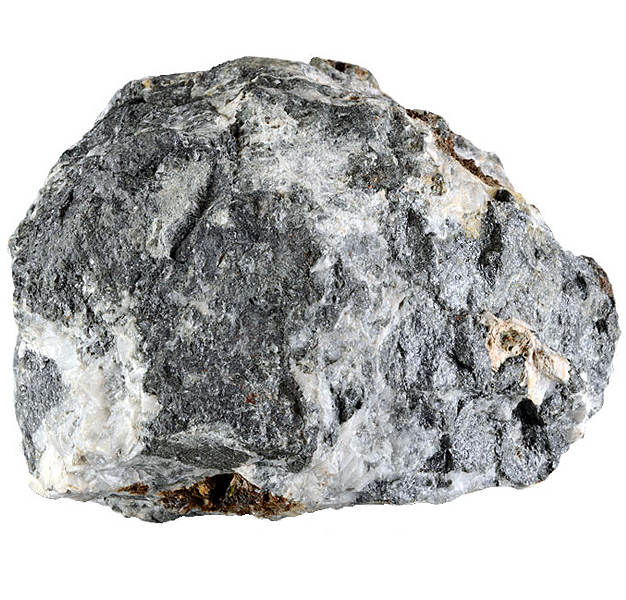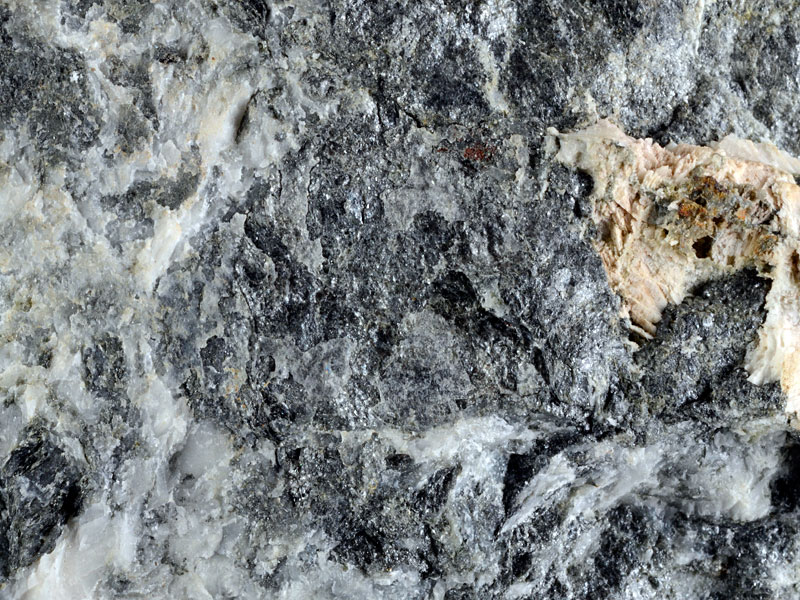
Fact sheet
This rock sample was originally a limestone deposited in the Proterozoic era. It metamorphosed to a marble during the Grampian orogeny around 480 million years ago but crystallised very few of the metamorphic indicator minerals that George Barrow (1853—1932) used when he defined ‘Barrovian metamorphic zones' (chlorite-biotite-garnet-staurolite-kyanite-sillimanite) in the Scottish Highlands. The sample comes from south east of Lough Finn, County Donegal, Ireland in a series of rocks that are correlated with the Scottish Dalradian.
The thin section is dominated by calcite, with quartz grains that form patches of both silty lithologies and individual grains in a calcite matrix. Deformed muscovite in the silica-rich areas may be original sedimentary grains and, if so, their presence indicates low grade metamorphism, possibly as low as chlorite or biotite grade.
The United Kingdom Virtual Microscope (UKVM) collection consists of igneous, sedimentary and metamorphic rocks from around the UK.
It is intended as a teaching resource, helping to tell the story of the common rock types and how they form, and reflecting the history of the UK at the margins of the continent of Europe. The collection is a series of teaching sets, for example igneous rocks from the North Atlantic Igneous Province and SW England; high-temperature metamorphic rocks from Scotland and low-temperature metamorphic rocks from Wales; and sedimentary rocks, including English limestones and sandstones.







